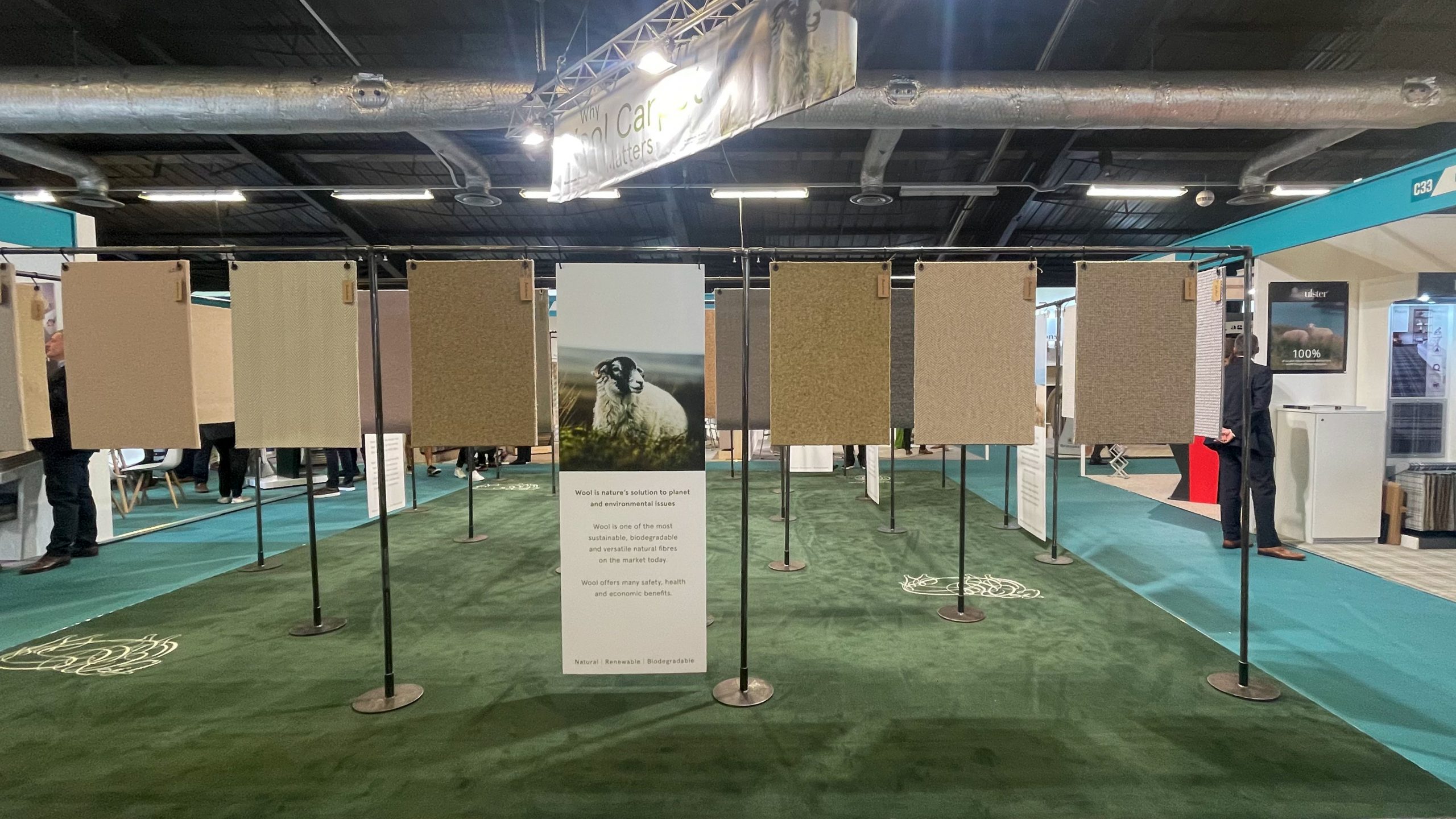Why Wool Carpet Matters – The Flooring Show in UK
The Campaign for Wool and The Wool Carpet Focus Group come together last month to show ‘Why Wool Carpet Matters’ demonstrating why wool is one of the most sustainable, biodegradable and versatile natural fibres on the market today.
The theme of this campaign is important as the world battles with climate change and issues around over- consumption, emissions and non-biodegradable waste.
By highlighting some of the most innovative new carpets and rugs as well as new colours, patterns and textures from the leading wool flooring companies, they will show how its use in residential and commercial interiors has never been more prevalent.
In a post-pandemic world, where we have become more aware of the impact interior spaces can have on our wellbeing, and with energy costs rising, wool offers many safety, health and economic benefits. From soft tactile surfaces to acoustic noise reduction, warmth and longevity, wool is an entirely natural product and more relevant to the fabric of society today than it ever has been.
Wool is represented by the key wool growing markets of Britain and New Zealand, both ideal for crafting durable floorcoverings which have excellent colour, bounce and recovery attributes. Over 100 examples of the best and most innovative new products have been brought together as part of a special showcase.
Emerging Flooring Trends
Wool floor coverings ‘look good’ but ‘feel better’; carpets and rugs that are soft underfoot are comforting, absorb sound and help us to relax. Soft tactility is vital to our wellbeing and enhanced by nature-inspired colours, textures and patterns.
Wellness at home
Wool floor coverings absorb and lock away pollutants such as volatile organic compounds (VOC’s) from the air.
Keeping warm at home
Wool is a great insulator. With energy prices rising, keeping homes warm will be a top priority. Wool is warm underfoot, and carpet or rugs offer significant benefits when it comes to retaining retain heat.
Small space living in urban areas is increasing, and acoustic noise levels are rising. Carpet squares and carpets with bound edges offer consumers flexible and changeable options, ideal if renting to move from home to home whilst helping manage acoustic levels. This means no fitting is required; offering added value for those on a budget.
‘On demand’ interiors.
With the rise of Internet shopping, expectations have risen about turnaround/delivery times. British manufacturers can offer a good delivery service on orders (stockholding/plant capacity, quality control).
Consumers are actively searching for products with known provenance, often with a ‘homegrown’ British story, from field to flooring. Additionally, brands and manufacturers that offer designs with socio-economic benefits are growing in popularity, as buying environmentally better products helps to foster positive feelings. In this area, New Zealand wools and their growing regimes offer good eco and land practices for regenerative farming.
Flooring brands are creating special QR codes that allow customers to follow the backstories, linking manufacture and wool sources, with references to the natural benefits of using British and New Zealand wool in flooring for enhanced performance and durability.
As dog and pet ownership increased during the pandemic, easy-clean products are now in high demand. Wool naturally repels dirt and is easy to clean without using harmful chemicals, water and a mild detergent is all that is required.
Personalisation
As the home becomes ever more important as a combined living and work space, homes are being refreshed with design-led and bespoke flooring options that allow consumers to create unique schemes and zones.
Wool has many Positive Benefits
Wool is nature’s solution to planet and environmental issues when used in carpets and upholstery.
Wool is high in water and nitrogen content, it is also naturally flame retardant, and when subject to extreme heat it does not ignite and therefore it produces less smoke without the toxic fumes associated with man-made fibres.
Wool is one of the best materials for sound insulation as it can dampen or absorb high and low frequency sounds.
Wool floor coverings can be used to help mitigate changes in indoor air humidity and improve air quality.
Wool carpets are a great investment as they are highly durable and look better for longer.
Source: Campaign for Wool


